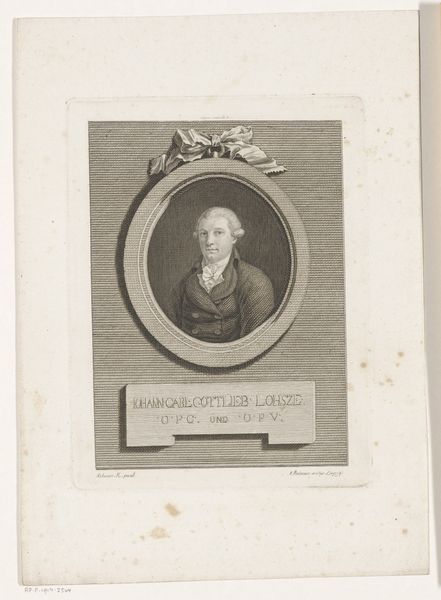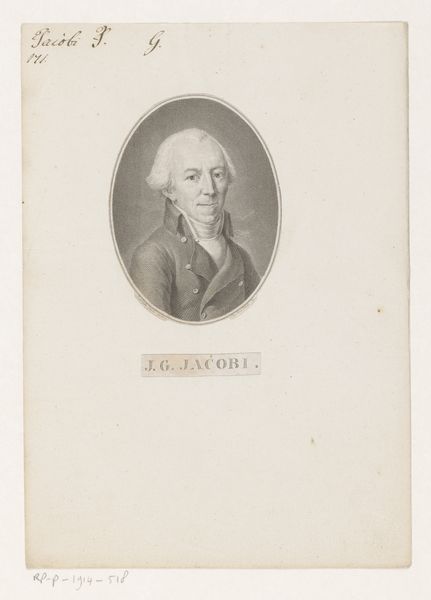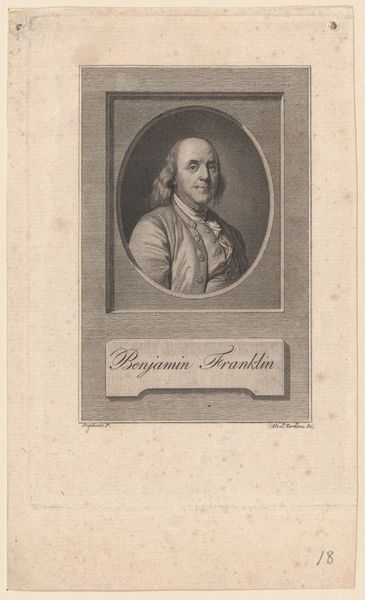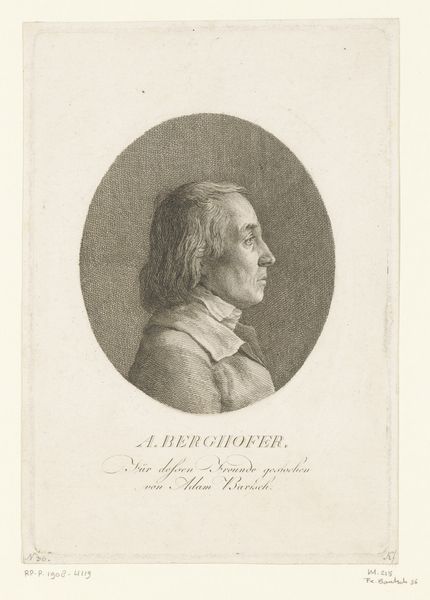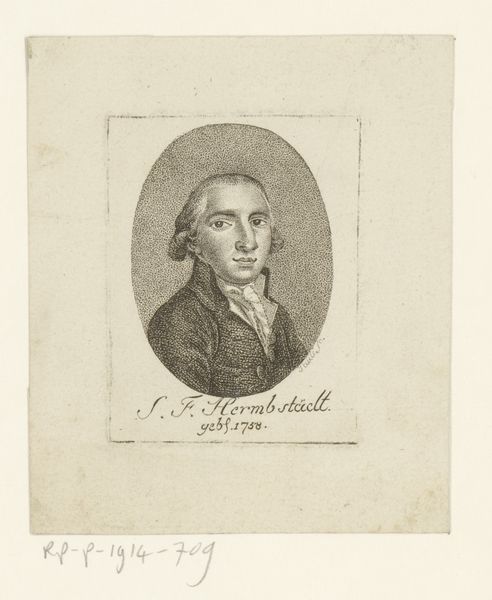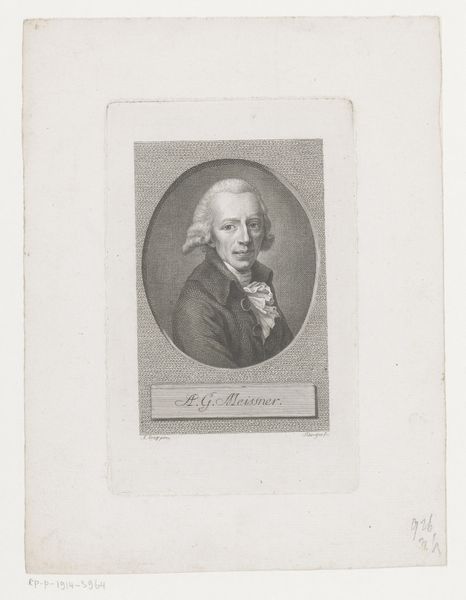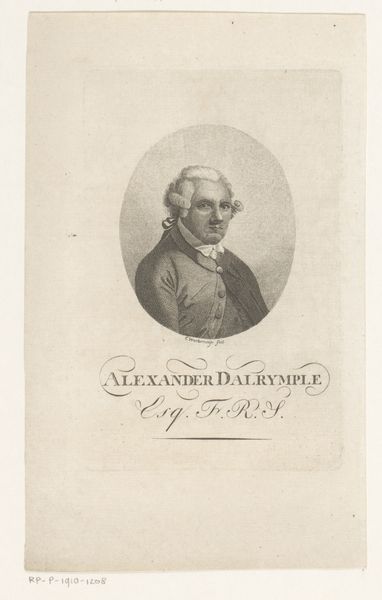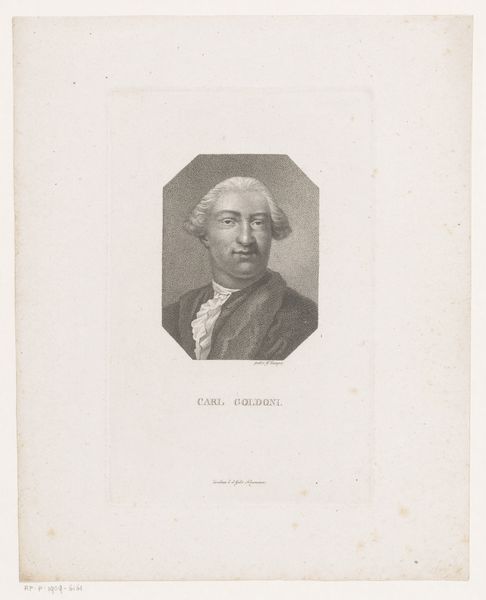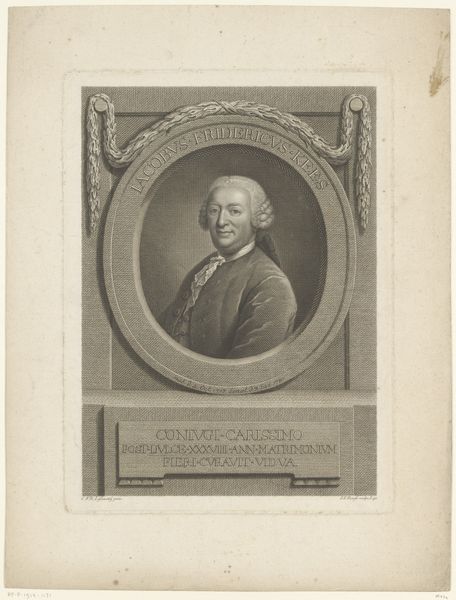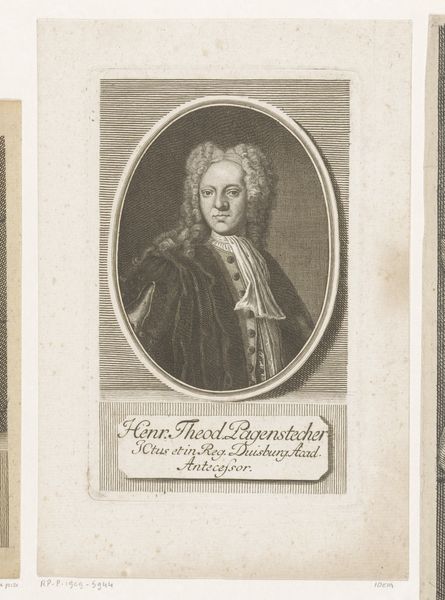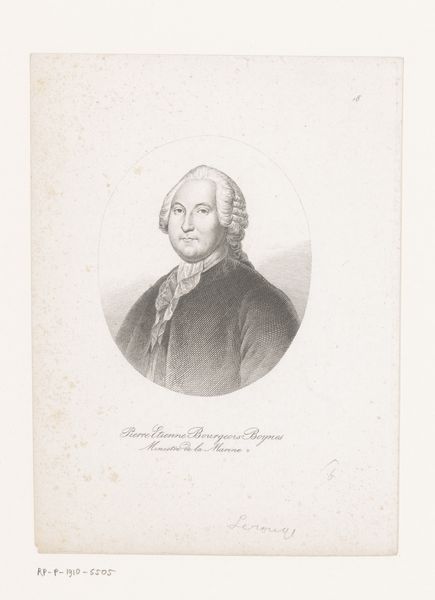
print, metal, paper, engraving
#
portrait
#
neoclacissism
# print
#
metal
#
paper
#
line
#
engraving
Dimensions: width 277 mm, width 195 mm
Copyright: Rijks Museum: Open Domain
Curator: Here at the Rijksmuseum, we have an engraving by Johann Heinrich Lips, active between 1768 and 1817, titled "Portret van Carl Leonhard Reinhold". Editor: My immediate impression is one of thoughtful constraint. The monochrome, the oval frame—it all feels very composed, even a bit severe. Curator: It reflects the Neoclassical style gaining popularity at the time, drawing on the clean lines and rationality of classical antiquity. Editor: Absolutely. Looking through today's lens, the portrait’s deliberate reserve speaks volumes about societal expectations of men, particularly intellectuals, during that period. This was a time when demonstrations of power came through restrained representation and control of emotional expression. I’m struck by how this imagery still permeates our understandings of power dynamics. Curator: The context of the subject, Carl Leonhard Reinhold, also adds layers. He was a philosopher, instrumental in popularizing Kant. Images like these solidified his status as a man of intellect. We should remember that the image itself is actively crafting this. Editor: The careful shading gives Reinhold a thoughtful expression, yet his pose and clothing lack any flamboyance. He’s presented as a serious academic, which plays into constructing philosophical authority. How did the societal landscape impact Lips' artistic practice when immortalizing Carl Leonhard Reinhold on metal and paper? Curator: Artists such as Lips had to negotiate the patronage system, the rising importance of the public sphere, and their personal artistic visions. Editor: It really underscores how deeply enmeshed art is with the cultural and political currents of its time. This isn't just a picture of a philosopher, it's an assertion of values. Curator: I agree. It makes you consider who gets remembered, and through what carefully constructed images. Editor: And how those images continue to shape our understanding of history, power and even knowledge itself.
Comments
No comments
Be the first to comment and join the conversation on the ultimate creative platform.
